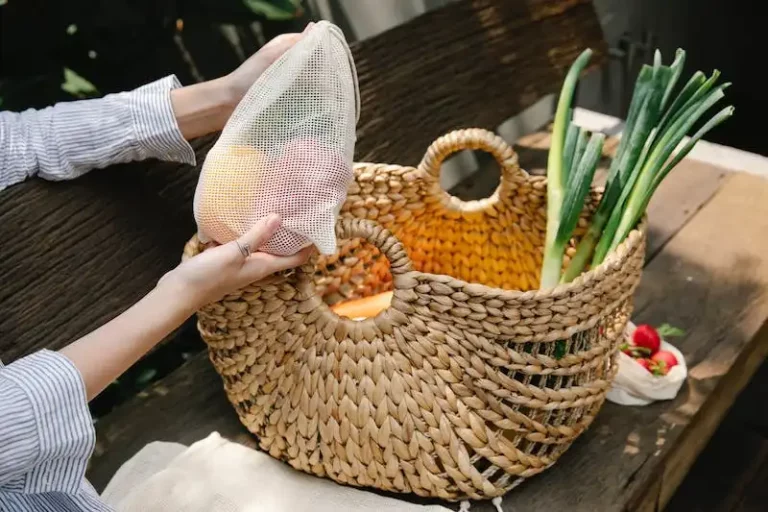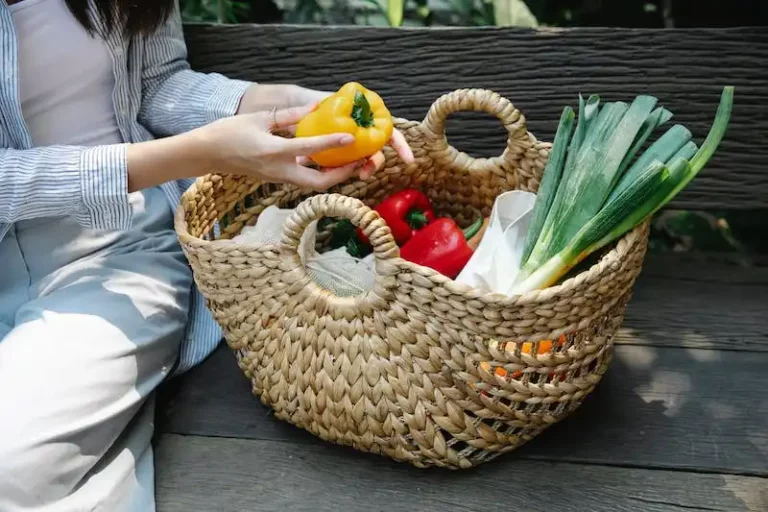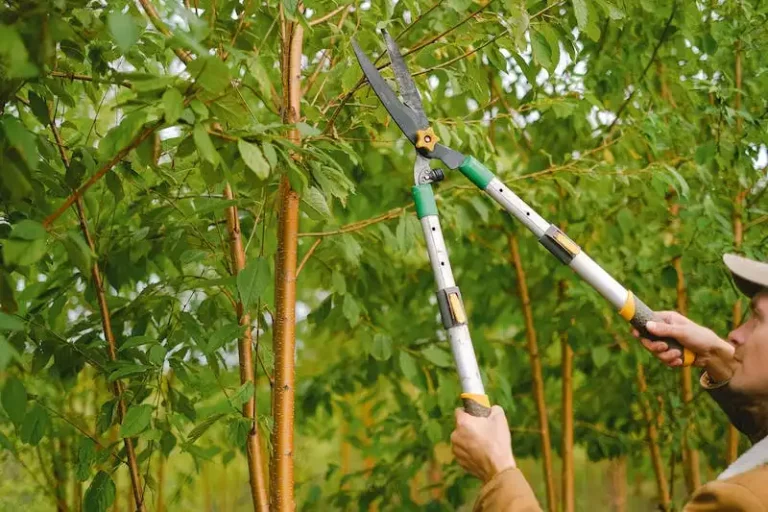If you’re a gardener, you know the importance of providing support for your plants. Sturdy stakes, tunnels, and cages can make all the difference in a successful garden. In this article, we’ll explore 15 DIY plant supports and cages that will help you keep your gardens looking their best during the summer months.
One option is a vintage-inspired obelisk, which adds a touch of charm to your garden while providing support for climbing plants. A freelance writer and gardener shares their tips for making a wire obelisk in just 5 simple steps. These supported cages are easy to make and give your garden an early start, as your perennials will be healthier and happier with some extra support.
If you’re looking for a more cost-effective option, a pallet trellis is a great choice. It’s a simple DIY project that takes minimal time and money to create, and it provides a sturdy place for your plants to grow. You can also make use of old bikes to create unique and stylish plant supports.
For those with limited space, a folding arbor is a clever solution. It can be easily set up and folded away as needed, giving you flexibility in your garden layout. Another option is a pole bean teepee, which not only supports your plants but also adds a playful element to your garden.
If you’re dealing with wind or heavy rain, a dome-shaped plant support is a great way to keep your plants protected. These towers are not only functional but also beautiful additions to your garden. And for those who love a rustic look, a coppiced wood trellis can add a touch of natural elegance to your garden.
So whether you’re a seasoned gardener or just starting out, there are plenty of DIY plant supports and cages that you can make yourself. From vintage-inspired obelisks to simple wire cages, there are endless ways to support your plants and keep your summer garden looking beautiful and green.
Check out these 15 DIY plant supports and cages and start planting with confidence – your plants will thank you!
9 Plant Supports And Cages For Your Summer Garden:
- Stakes
- Tunnels
- Vintage-inspired obelisk
- Wire cages
- Pallet trellises
- Cute bike support
- Folding arbor
- Teepee for squash
- Dome-shaped plant support
“Supporting your plants is not only a practical solution, but it also adds beauty and style to your garden.”
Don’t let wind or heavy rain mean the end of your plants. DIY plant supports and cages are just what you need to keep them standing tall and thriving. So get creative and start making your own plant supports today!
Conclusion
By providing the right support for your plants, you can help them grow healthier, be more productive, and look their best. DIY plant supports and cages offer a cost-effective and customizable option for any gardener. So don’t let your plants suffer – give them the support they need and enjoy a beautiful summer garden!
Ways to Grow Your Own Plant Supports Instead of Buying Them
If you want to save some money and add a personal touch to your garden, why not try growing your own plant supports instead of buying them? It’s a simple and cost-effective way to keep your plants healthy and happy throughout the growing season. Plus, it can be a fun DIY project that you can enjoy with your family or friends.
Here are 10 creative ways to grow your own plant supports:
1. Willow Obelisk: Start by bending willow branches into an obelisk shape, and secure them together with twine. This natural-looking plant support is not only sturdy but also adds a nice touch to your garden.
2. Teepee Trellis: Gather several long branches or bamboo canes and tie them together at the top to form a teepee shape. This trellis provides support for climbing plants like peas, beans, and cucumbers.
3. Grape Stake Trellis: Use grape stakes or other long, sturdy wooden posts to create a trellis for grapevines or other climbing plants. Simply drive the stakes into the ground and attach wire or twine between them to support the plants.
4. PVC Pipe Cage: Cut PVC pipes into equal lengths and assemble them into a cage shape using connectors. This DIY plant support is perfect for tomatoes or any other tall, heavy fruit-bearing plants.
5. Dome-shaped Trellis: Build a dome-shaped trellis using willow branches or sturdy wire. This support is ideal for small plants and flowers that need gentle, all-around support.
6. DIY Tomato Cages: Instead of buying metal tomato cages, make your own using sturdy wire or fencing. Simply shape the wire into a cone or cylinder shape and secure it in the ground around your tomato plants.
7. Natural Plant Support Rings: Use twine or string to tie several wooden branches together in a circular shape. This simple and natural plant support ring can be used for growing flowers, herbs, or small vegetables.
8. Stick A-frames: Gather several long, straight branches and secure them together at the top with twine to form an A-frame. This plant support is great for small plants or those that need just a little extra stability.
9. PVC Arch Trellis: Cut PVC pipes into equal lengths and bend them to form an arch shape. Secure the ends in the ground to create a sturdy, arch-shaped trellis for climbing plants like squash or cucumbers.
10. DIY Stakes: If you have some extra wooden sticks or bamboo canes, use them as stakes to support your plants. Drive them into the ground near your plants and tie the stems to the stakes as they grow.
By growing your own plant supports, you not only save money but also give your garden a unique, personalized touch. These DIY projects are fun, inexpensive, and can be tailored to fit your specific needs. So, next time you need plant supports, consider building them yourself instead of buying!
In conclusion, there are plenty of alternatives to buying expensive plant supports. From willow obelisks to DIY tomato cages, you have a wide array of options to choose from. Start growing your own plant supports today and watch your garden thrive!
Living Plant Supports
If you’re tired of using traditional plant supports like stakes and cages, consider incorporating living plant supports into your garden. These supports not only serve a practical purpose but also add a touch of natural beauty to your outdoor space.
One example of a living plant support is the umbrella trellis. To make this unique support, bend bamboo poles to create an umbrella shape, and then secure them together at the top. As the plants grow, they will naturally climb and adhere to the bamboo structure, creating a vintage and whimsical look.
Another option is to use sadie tunnels or domes. These can be made by bending branches or using long, flexible materials like willow or pipe. Create a tunnel shape by connecting the branches or pipes, and then plant your favorite climbing plants at the base. As the plants grow, they will wrap around the supports, forming a beautiful arch for your garden.
If you’re looking for something more sturdy, consider building a trellis or arbor. These structures can be made from wood or metal and provide ample support for climbing plants. You can paint them to match your garden decor or leave them in their natural state for a more rustic look.
An alternative to traditional cages for tomato plants is to use a folding trellis or obelisk. These can be easily folded and stored when not in use. Simply place the trellis or obelisk in the ground near your tomato plants and train the branches to grow up and around the supports. This method not only saves space but also allows for better airflow and sunlight exposure for your plants.
Whether you’re growing flowers or vegetables, having the right plant supports is necessary for healthy and successful growth. Instead of buying pre-made supports from the store, why not get creative and make your own? Not only will this save you money, but it will also add a personal touch to your garden.
So why not start your own DIY plant support projects this summer? From bean arches to colorful trellises, there are plenty of options to choose from. Just make sure to check which type of support is suitable for the plants you’re growing and how to properly train them to the support. With a little creativity and some DIY skills, you can create unique and functional plant supports that will enhance your garden all year round.
Coppicing Trees For Plant Supports
If you’re a practical and eco-friendly gardener, then you should definitely consider coppicing your own trees to create natural plant supports. Coppicing is an ancient method of woodland management that involves cutting trees at ground level and allowing them to regrow from the stump. This technique allows you to create sturdy and long-lasting supports for your plants while also promoting healthy growth for the trees themselves.
To coppice trees for plant supports, you’ll need to choose the right type of tree. Some common choices include willow, hazel, and osier. These trees are known for their flexible and strong stems, making them ideal for supporting climbing and floppy plants in your garden. You can even use tree varieties that produce vibrant and colorful stems, adding a beautiful aesthetic to your summer garden.
Once you’ve selected the appropriate tree, you can start the coppicing process. Typically, trees are coppiced in late winter or early spring, before the new growth begins. Using a sharp pair of pruning shears or a saw, cut the tree trunk at about 6 to 8 inches above the ground. Make sure the cut is clean and smooth to prevent any damage or infection to the tree.
After cutting, the tree stump will start to produce new shoots. These shoots can be used as plant supports when they reach the desired height. To create a simple and sturdy support, gather the shoots and tie them together with twine or a flexible wire. You can also use them individually as stakes for supporting individual plants or row markers.
If you’re looking for a more decorative and unique plant support, consider using the coppiced shoots to build a trellis or a tower. Arrange the shoots in a row or a circular shape and secure them together with twine or metal fasteners. This will create an eye-catching structure that not only supports your plants but also adds a touch of charm and character to your garden.
One of the advantages of coppiced tree supports is that they are completely free. Instead of buying expensive metal or wooden stakes, you can simply coppice your own trees and save money. Plus, you can feel good about using a sustainable and eco-friendly method to create supports for your plants.
In conclusion, coppicing trees for plant supports is a super simple and practical way to enhance your summer garden. By using the natural growth of trees, you can create sturdy and long-lasting supports while also promoting healthy tree growth. Whether you’re building trellises, towers, or individual stakes, coppiced supports offer a low-cost and environmentally friendly alternative to store-bought options. Try your hand at coppicing and see the difference it can make in your garden!


